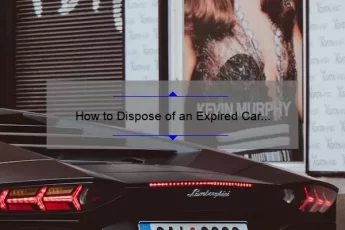When it comes to speed, it’s difficult to argue with the speed of NASCAR cars. They’re built for speed, and that’s why their overall lap times are often around 92 miles per hour. However, their top speeds drop considerably if they’re on a track with lots of corners.
Limitations of nascar cars’ top speed
The top speed of a NASCAR car is determined by its engine, which can deliver up to 900 horsepower. In theory, these cars can reach speeds of 240 mph, but that limit has been set for safety reasons. Despite the high horsepower, the cars’ top speeds are limited by the size of the tracks.
However, this doesn’t mean that the cars can’t break these limits. The drivers must stop at the designated point on the circuit if they exceed these limits. If they don’t, they risk a drive-through penalty. In fact, some NASCAR cars reach speeds of over 200 mph, despite their size.
Regardless of the car’s speed, NASCAR race cars are still highly competitive. Because they are engineered to have similar performance, each team can optimize its power, acceleration, grip, and other characteristics. This allows teams to adapt the cars to the conditions of different tracks.
Top speeds
There are several factors that determine how fast a NASCAR car can go. First, you should know that speed is relative. While the average speed of a street car is around 70 miles per hour, NASCAR cars can reach up to 200 mph. In addition, NASCAR drivers jostle each other for hours at a time, which can lead to serious injuries and fatalities.
Another important factor is the track. Different tracks allow the cars to reach different top speeds. NASCAR races are held at different tracks throughout the year. These tracks differ in length, composition, and safety features. As a result, the top speeds of NASCAR cars will vary as well.
The top speed of a NASCAR car depends on the type of track. The fastest race cars achieve speeds of over 270 miles per hour in a straight line. However, the average race speed is closer to 80 to 85 mph. Furthermore, the cars are not as powerful on short tracks. In addition, the drivers cannot accelerate as much as they can on long oval tracks.
While NASCAR cars are not as fast as Formula 1 cars, they are still among the fastest in the world. Some F1 cars can reach 235 mph. While NASCAR cars can reach these speeds, they don’t have the aerodynamic aids that Formula 1 cars have. In addition, they can go from zero to sixty in just 3.4 seconds.
A Formula 1 race car can reach 200 mph in under a second. By comparison, NASCAR cars can reach that speed in 3.5 seconds. This is not that fast, but it is close. A NASCAR car can accelerate to 62 mph in 3.5 seconds. It can even hit a top speed of 212 mph.
Although NASCAR cars have different performance levels, they are both purpose-built for winning races. The two types of cars are very different in terms of their looks. However, they do have similar top speeds and performance levels.
Top speeds during the restrictor plate era
While the use of restrictor plates on race cars has improved safety at the NASCAR track, many drivers have still pushed the speed limit. In fact, some cars had reached as high as 228 mph. The reason for these higher top speeds may be related to the fact that cars used to have much more horsepower. This is one of the reasons why NASCAR has implemented a top speed limit of 150 mph.
The restrictor plate is a small square piece of aluminum that is placed over an engine intake and restricts the flow of air. As a result, it cuts the amount of power and fuel that a NASCAR car can produce. In 2004, Rusty Wallace tested unrestricted speed and achieved a top speed of 228 mph on the Talladega straight. However, Bill Elliott still holds the record for the fastest qualifying lap in NASCAR history, which is unbeatable to this day.
Although restrictor plates helped save lives, they also take away from the thrill of the sport. The modern race cars would be much faster without such restrictions. A lack of restrictions would have increased the amount of excitement in NASCAR. That is why the new laws are so controversial.
In the 1980s, cars reached speeds of more than 200 mph. However, after restrictor plates were introduced, cars began to slow down. This era of NASCAR focuses on skill and strategy rather than speed. In fact, in the first years of the restrictor plate era, the highest recorded top speed was 220.4 mph (339 kph).
After Bill Elliott’s record-breaking speed run, NASCAR changed its rules so that race cars would be forced to slow down. After that record run, all cars were required to wear restrictor plates that limited the maximum speed. Because of this, the top speed of the cars was significantly reduced.
NASCAR has learned that tight races are the most exciting, and that it’s the close competition that makes the races exciting. In the 1980s, however, NASCAR had to limit their top speeds.
Top speeds during the tapered spacer era
The tapered spacer is a device used in auto racing that restricts the flow of air. Its design is similar to a five-gallon water bottle. The bottle has a hole at the bottom and a tap at the top. In the NASCAR world, the tapered spacers are used to decrease air flow at high speeds. They also make tires stiffer and harder.
The original concept behind the tapered spacer was to increase the safety of drivers. The higher the speed of the car, the higher the risk of an airborne accident. However, the new rules package did not allow for higher speeds because a car could become airborne at these high speeds. As a result, NASCAR decided to slow down the cars.
Although NASCAR did not use tapered spacers in major races, the idea of using them could have been an X factor. They would have done the same thing as restrictor plates: bunch up the cars and slow them down to a safe speed. Joey Logano, the defending Cup champion, said he expected more crashes this year.
However, NASCAR has recently issued a rules bulletin for the 2019 season. This bulletin is meant to limit the speeds at Daytona and increase the safety of cars on superspeedways. The tapered spacer has been reduced from 57/64 inches to 53/64 inches. Additionally, wickers on the rear spoiler have been removed. Lastly, a reinforced roll bar is mandatory.
While the tapered spacer limits the power output of cars, it still allows drivers to reach a top speed of around 200 mph. Those speeds are very high, but they also limit passing ability. Passing is a big issue in NASCAR this season, and it is very difficult to predict the outcome of a 500-mile race.








